Key points
The theory is that inflation expectations influence future actual realised inflation.
Central banks pay close attention to inflation expectations, especially in the recent period of high inflation, out of concern that inflation expectations will become “unanchored” and lead to prolonged high inflation.
But, recent RBA research showed that consumers have a relatively low understanding of the RBA’s 2-3% inflation target, with the unemployed, females and those not engaged with economic news the least likely to know the RBA’s inflation target.
Measured short-term consumer inflation expectations also massively overstate actual inflation outcomes and bounce around a lot, reflecting changes in volatile items like petrol.
Market derived measures are a better guide to actual inflation outcomes and remain well anchored in Australia, indicating that the RBA inflation target remains credible.
The RBA needs to build better community understanding of inflation and the inflation target, to be able to better influence consumer spending decisions through monetary policy.
Introduction
In recent years, central banks have been increasingly focused on inflation expectations. Fears that inflation expectations will become “unanchored” (which means deviate too far from the inflation target) and lead to prolonged high inflation has been one reason behind the aggressive stance on inflation through numerous interest rate increases across global central banks. But some interesting research in the Reserve Bank of Australia Bulletin recently shows that consumers may not have a strong understanding around the RBA’s inflation target which challenges the importance of consumer inflation expectations.
Economic literacy around the RBA inflation target
Our prior work on financial literacy indicated the need to lift levels of financial literacy in Australia, in particular for the gender financial literacy gap. The RBA recently looked into the public’s understanding of the inflation target and inflation expectations as a test of economic and financial literacy.
The RBA’s primary function is to keep consumer price inflation between 2 3% per annum. When the RBA surveyed 3000 consumers, it found that just over 20% of respondents knew that the inflation target was between 2 3% (see the chart below), 40% were in the correct ballpark (answering either 1-2%, 2-3% or 3-4%), 30% did not know where the inflation target was and 30% of respondents gave an incorrect answer. Similar outcomes were observed overseas, with a study in the US finding that less than 20% of households could correctly identify the Federal Reserve’s 2% inflation target.
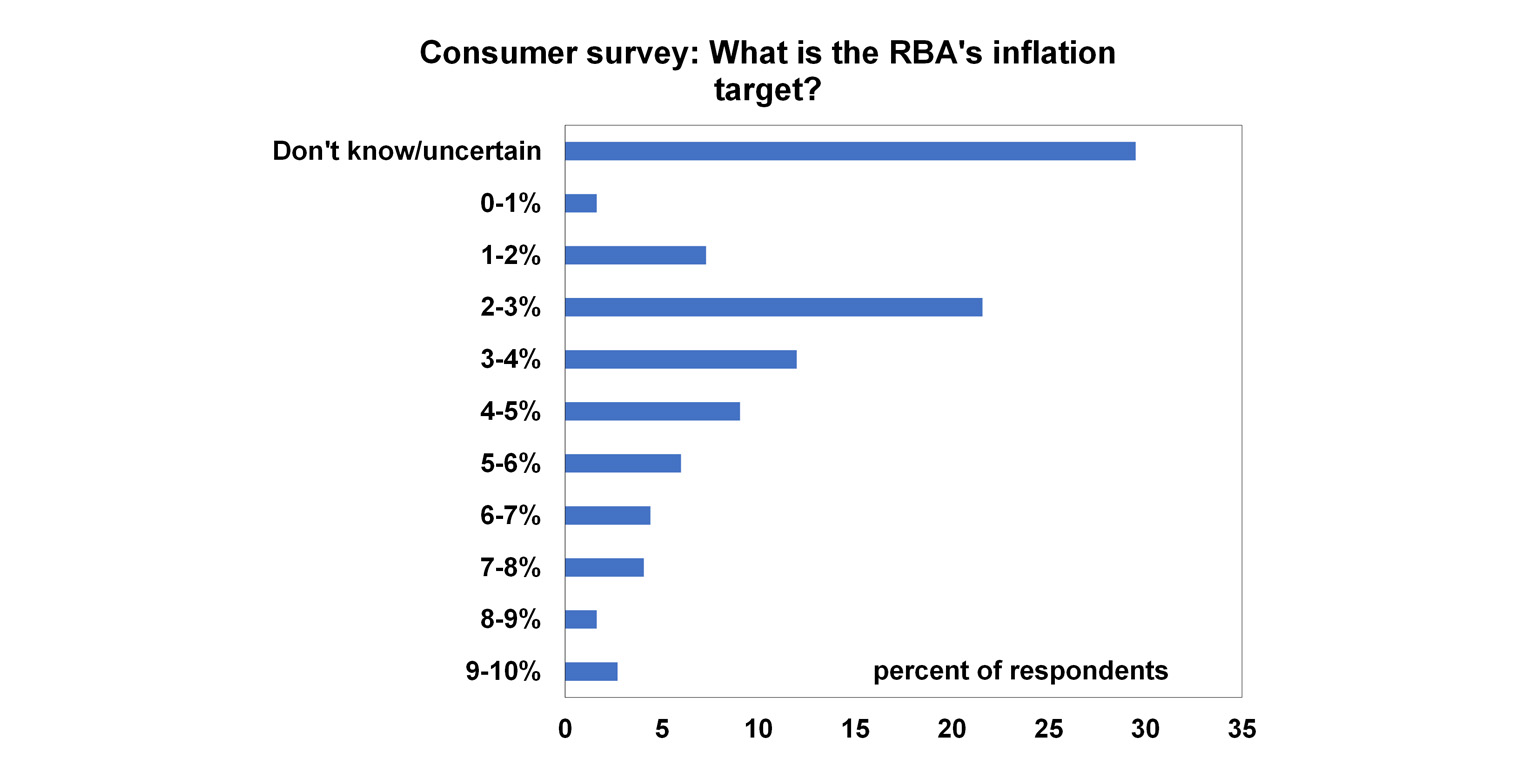
The RBA’s research also found that the socio-demographic groups that were most accurate in their knowledge around the inflation target were either engaged with economic news, male or had studied finance or economics. The groups least likely to be correct were those not engaged with economic news, female or unemployed – see the chart below.
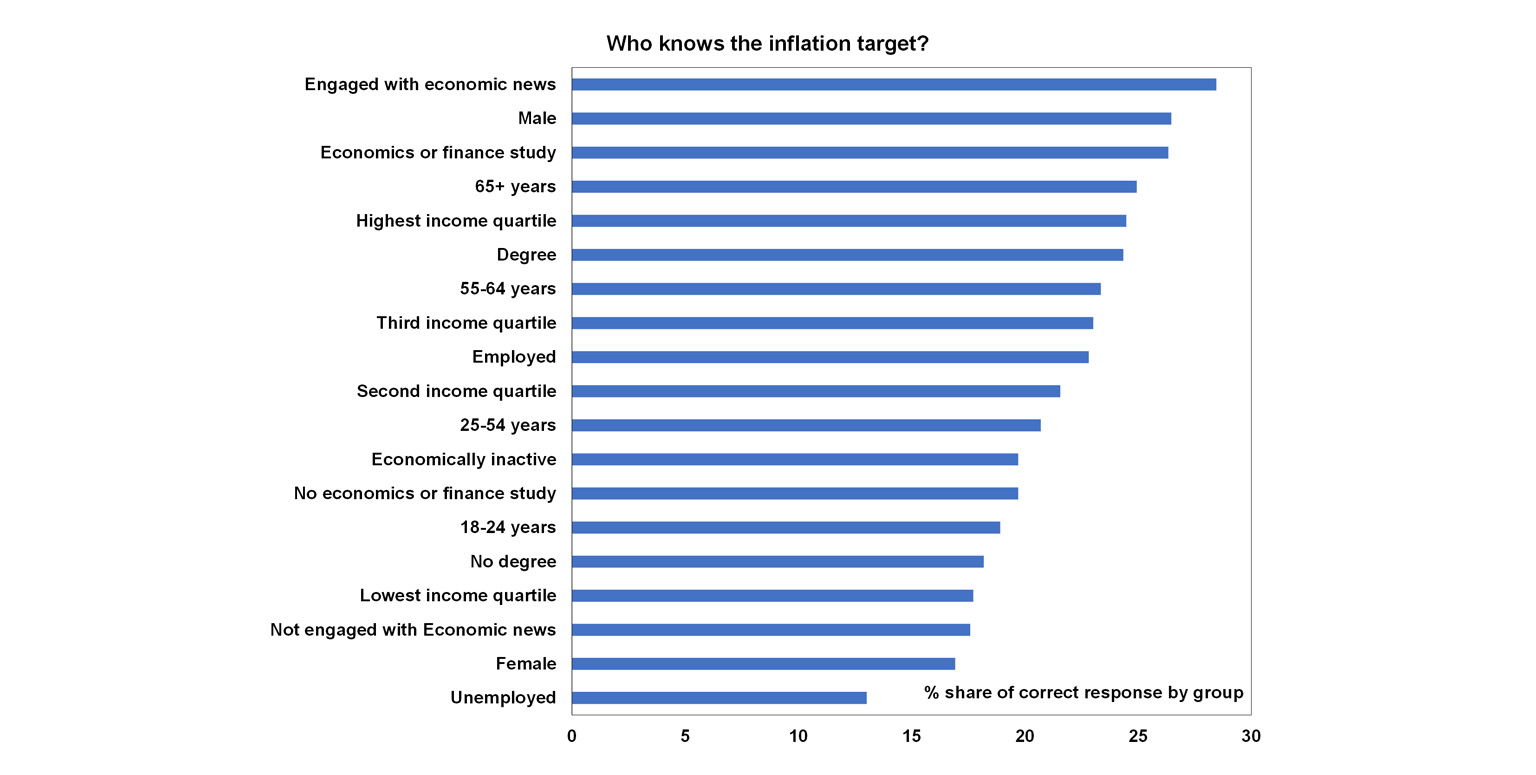
According to the RBA, there was a strong link between reported inflation expectations and the assessed level of economic literacy. Those with low levels of financial literacy had very high expectations of inflation. As financial literacy increased, inflation expectations were lower (and closer to the 2-3% inflation target). Females also consistently overestimated inflation, relative to males across all scores of economic literacy – see the next chart.
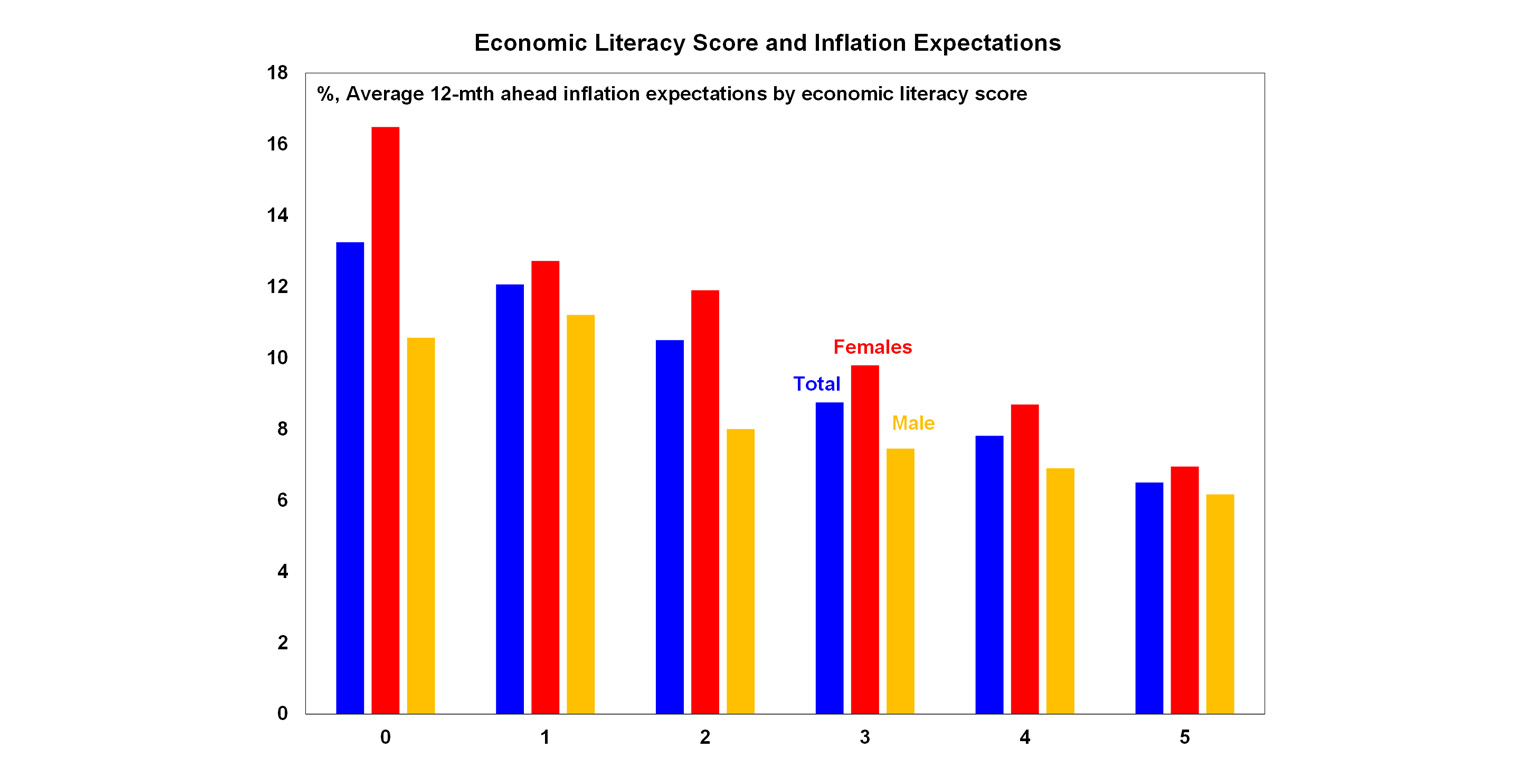
The low level of understanding of the RBA’s inflation goals means that readings on consumer inflation expectations may not be particularly reliable, especially as a tool for the RBA to assess monetary policy implications.
Measuring inflation expectations
The focus on inflation expectations started in the 1970’s off the back of the rational expectations revolution. The theory is that inflation expectations influence future actual realised inflation. For example, if consumers expect a rise in inflation, they may ask for a commensurate increase in pay, which leads to higher inflation. According to a Melbourne Institute survey of 1-year ahead consumer inflation expectations, consumers tend to severely overstate actual inflation (see the chart below) and inflation expectations also mostly reflect current inflation trends.
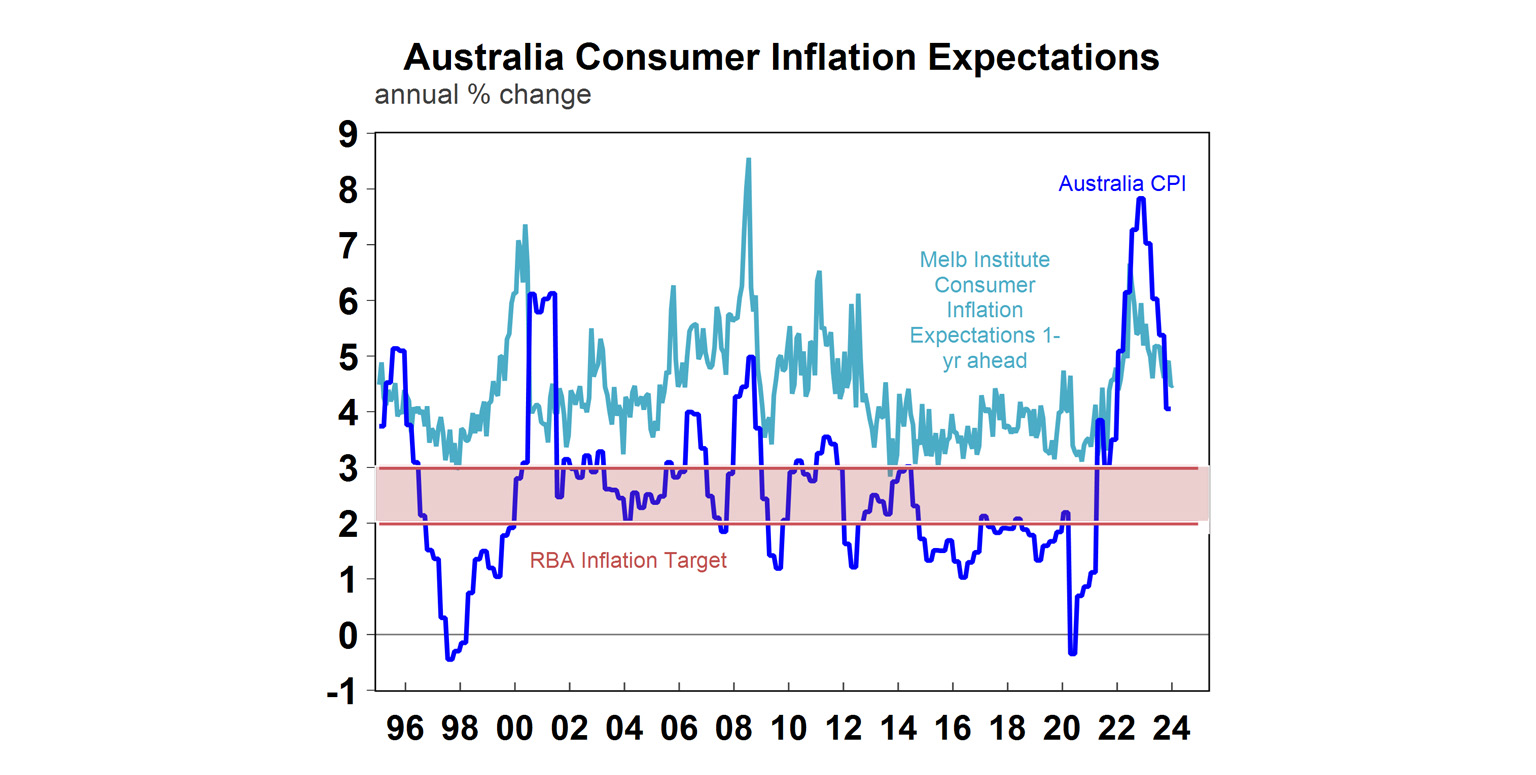
Consumer inflation expectations also bounce around a lot, reflecting changes in the price of volatile items like petrol (see the chart below).
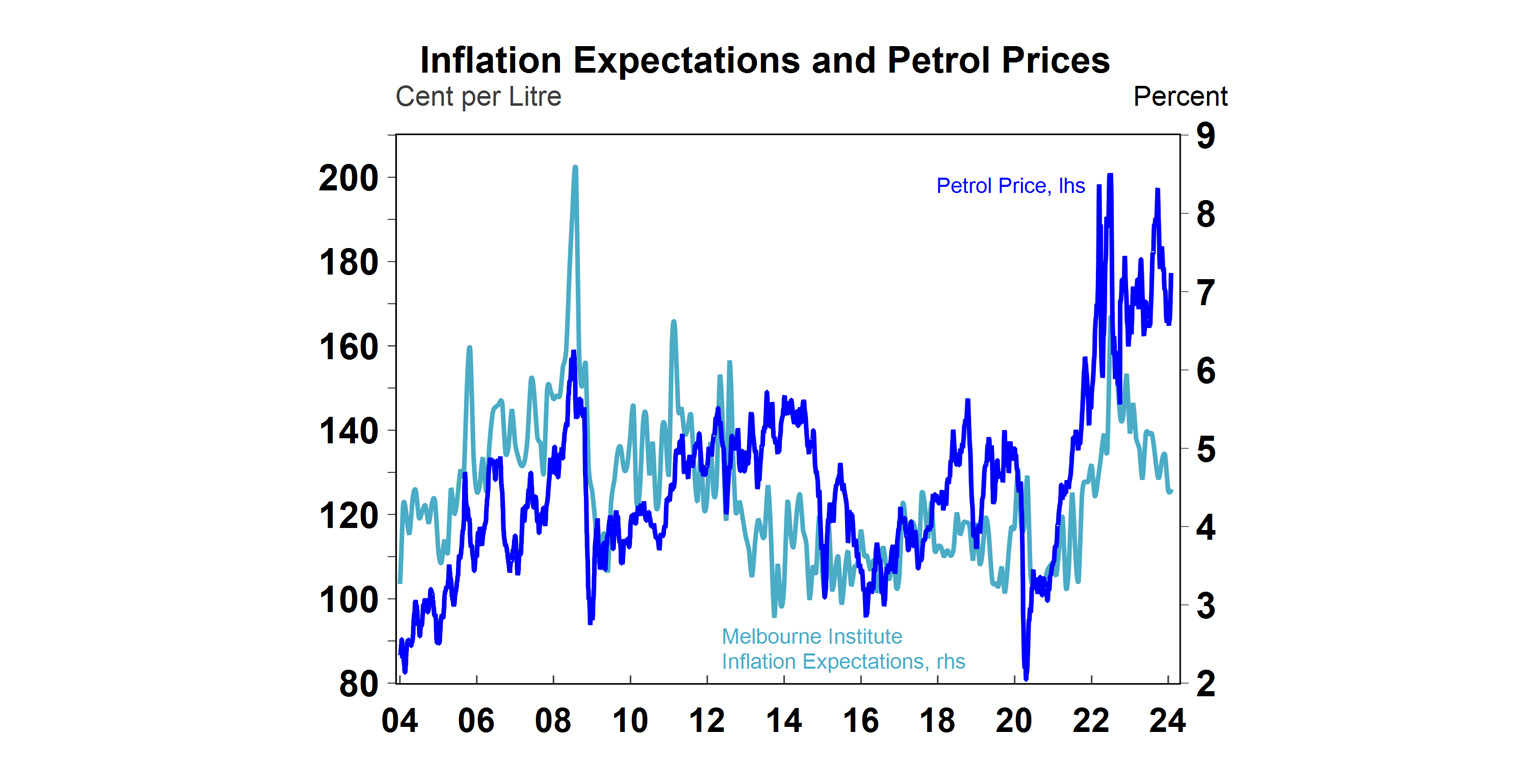
There are also market-based measures of inflation expectations, which can be derived from instruments like break-even inflation rates and inflation linked swaps that hedge for inflation. Inflation indexed swaps show that expectations for 1-5 year ahead inflation lifted significantly over 2021-23 but have settled now at 2.7%. And longer-term inflation expectations (5-10 years) have been relatively stable around 2.5% and most recently declining below 2.4%, indicating confidence in the RBA’s 2-3% inflation target.
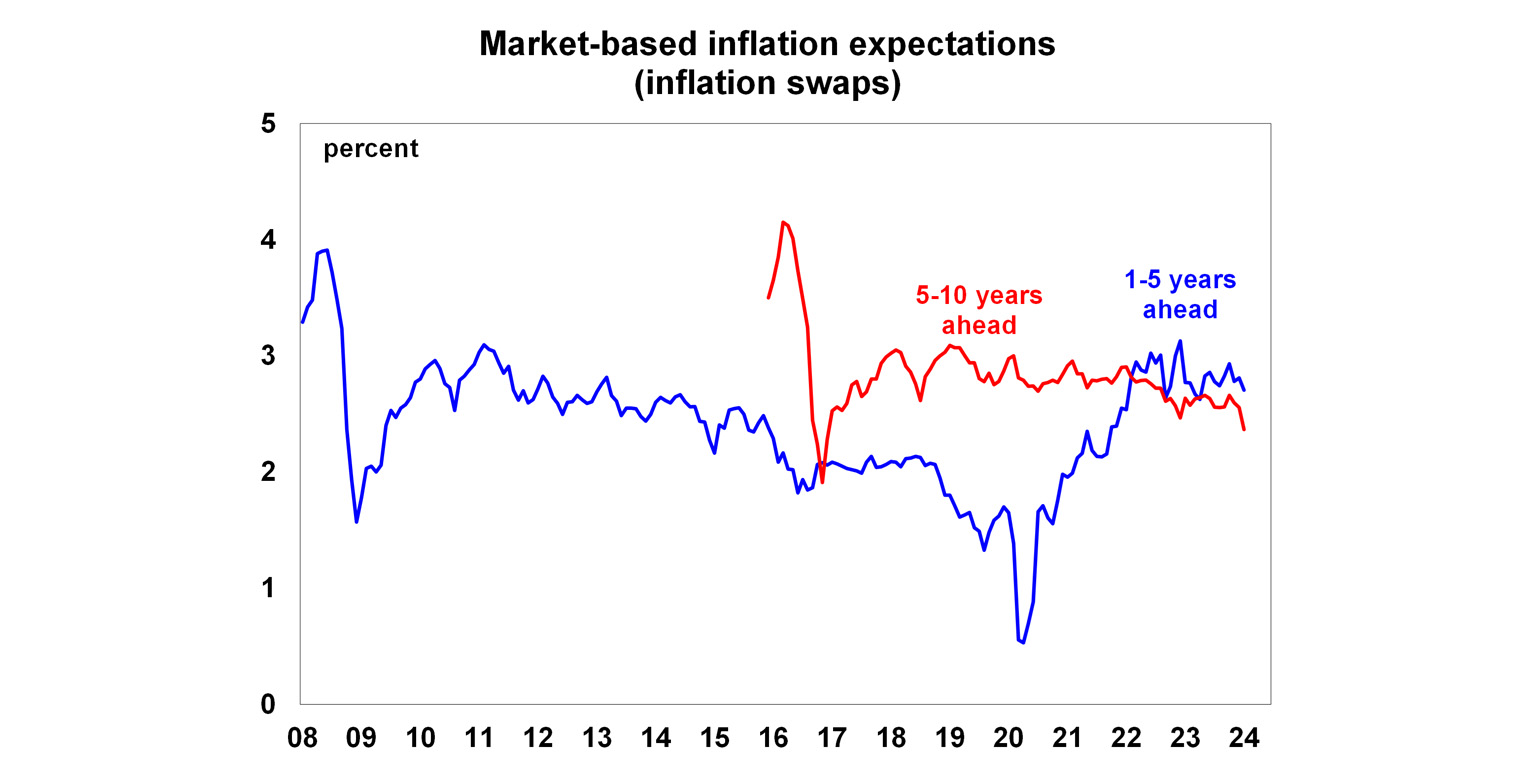
Union inflation expectations are important for an important gauge inflation because they set the expectations for award wages and Enterprise Bargaining Agreements. One-year union wage expectations spiked in 2023 (see the chart below) and are still high but are declining which indicates some moderation in wages growth this year.
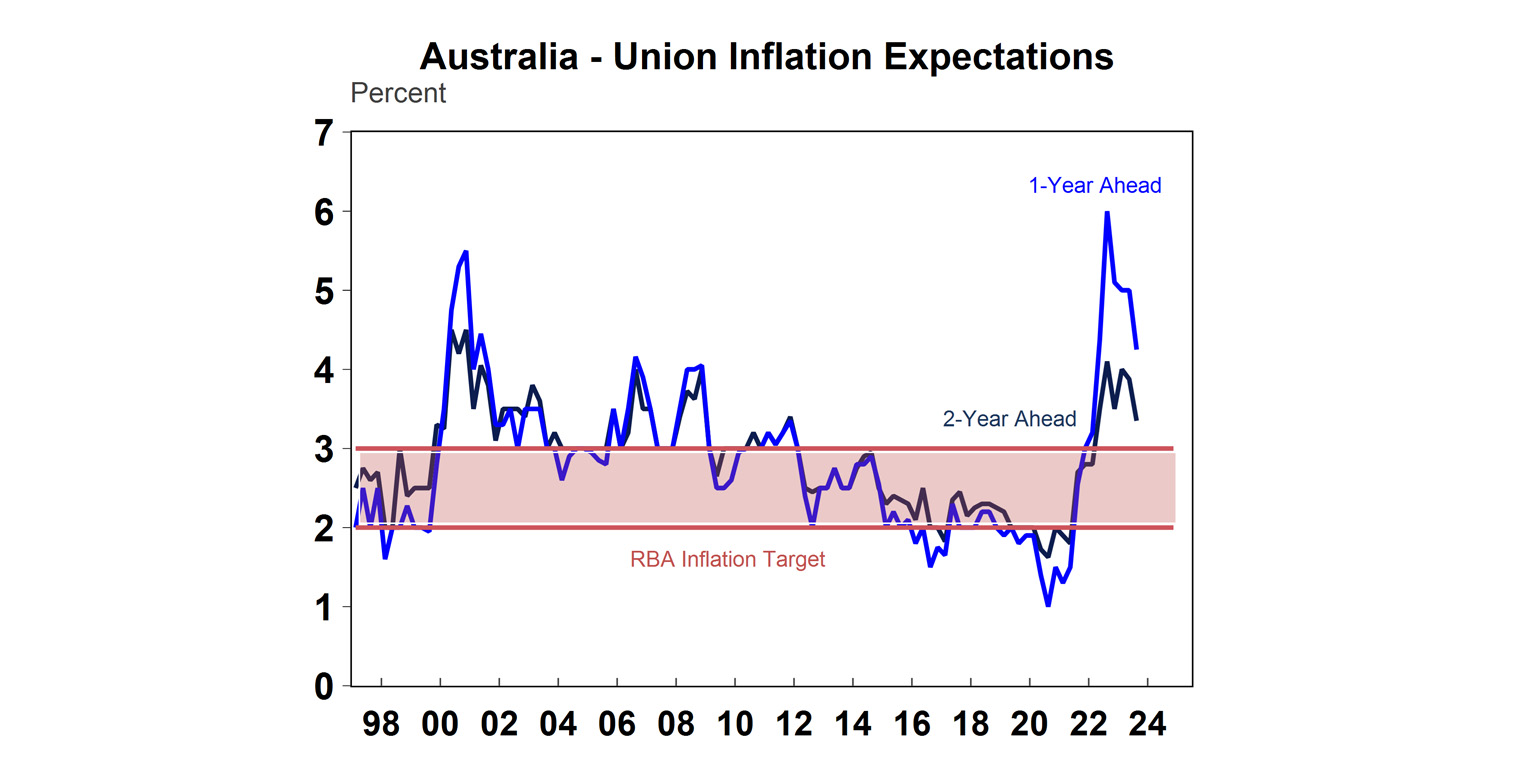
Implications for monetary policy
The low level of community understanding around the RBA’s inflation target and unreliable inflation expectations mean that consumer inflation expectations may not be a reliable predictor of actual inflation outcomes. Market and union inflation expectations are better guides to future inflation. It is important for central banks to build community knowledge around inflation, how it’s measured and the RBA’s inflation target, to be able to better influence consumer decisions through monetary policy given the low community understanding around these issues. The lower understanding of the RBA’s inflation goals for females again highlights the need to lift financial and economic literacy in this demographic.
You may also like
-

The “Financial Gap Year” that’s helping save $100,000 toward buying a home Tim Abbott left behind the big city for a remote farm property on a bold “Financial Gap Year”. He shares the lessons, sacrifices and surprises he's found along the way. -

Weekly market update - 31-10-2025 Australian shares are down over the week after high September quarter inflation data signalled no chance of a rate cut at next week’s RBA meeting and raised doubt about future cuts. There were large falls in healthcare, tech, consumer discretionary and real estate. -

Weekly market update - 24-10-2025 The US S&P500 is up by 1.1% so far this week, with large gains in energy, industrials and consumer discretionary stocks and declines in communication, consumer staples and utilities. The ASX200 is up 0.3%, with large gains in energy and real estate but declines in consumer staples, healthcare and materials. The $A is still going sideways at $0.65USD. Japanese shares rose strongly on stimulus hopes from the new Prime Minister.
Important information
Any advice and information is provided by AWM Services Pty Ltd ABN 15 139 353 496, AFSL No. 366121 (AWM Services) and is general in nature. It hasn’t taken your financial or personal circumstances into account. Taxation issues are complex. You should seek professional advice before deciding to act on any information in this article.
It’s important to consider your particular circumstances and read the relevant Product Disclosure Statement, Target Market Determination or Terms and Conditions, available from AMP at amp.com.au, or by calling 131 267, before deciding what’s right for you. The super coaching session is a super health check and is provided by AWM Services and is general advice only. It does not consider your personal circumstances.
You can read our Financial Services Guide online for information about our services, including the fees and other benefits that AMP companies and their representatives may receive in relation to products and services provided to you. You can also ask us for a hardcopy. All information on this website is subject to change without notice. AWM Services is part of the AMP group.









